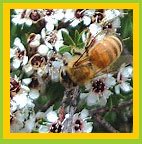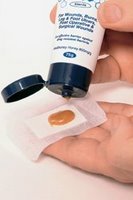
New Leukemia Therapy Research Reported
Medicine & Law Weekly, 11/3/2006
Investigators publish new data in the report "Enhancement of caffeic acid phenethyl ester on all-trans retinoic acid-induced differentiation in human leukemia HL-60 cells. All-trans retinoic acid (ATRA) induces complete remission in a high proportion of patients with acute promyelocytic leukemia (APL); however, the response is sometimes very slow. Furthermore, relapse and resistance to treatment often occur despite continued treatment with ATRA," researchers in Taichung, Taiwan report.
"Thereafter, combination treatment strategies have been suggested to circumvent these problems. The present study demonstrates that caffeic acid phenethyl ester (CAPE), a major component of honeybee propolis, enhanced ATRA-induced granulocytic differentiation in HL-60, a human promyelocytic cell line…
In addition, CAPE enhanced ATRA-induced cell cycle arrest at the G1 phase by decreasing the association of cdk2-cyclin E complex. Finally, it was demonstrated that CAPE promoted the ATRA-mediated nuclear transcription activation of RARalpha assessed by EMSA assay and enhanced the expression of target genes including RARalpha, C/EBPepsilon, and p21 protein resulting in the differentiation development of leukemia," wrote H.C. Kuo and colleagues, Chung-Shan Medical University, Institute of Biochemistry and Biotechnology.
The researchers concluded: "It is suggested that CAPE possesses the potential to enhance the efficiency of ATRA in the differentiation therapy of APL."
Kuo and colleagues published their study in Toxicology and Applied Pharmacology (Enhancement of caffeic acid phenethyl ester on all-trans retinoic acid-induced differentiation in human leukemia HL-60 cells. Toxicology and Applied Pharmacology, 2006;216(1):80-8).






 APIMEDICA 2006, October 13, 2006, Athens, Greece
APIMEDICA 2006, October 13, 2006, Athens, Greece






 Smoothie Smarts: Bee pollen. Protein Powder. Ginseng. Do these fat burners trim your gut -- or your wallet?
Smoothie Smarts: Bee pollen. Protein Powder. Ginseng. Do these fat burners trim your gut -- or your wallet?








